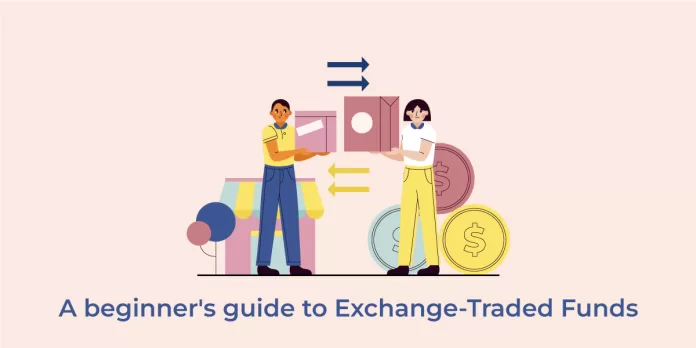Investing can be scary, especially for newcomers. With a vast array of options and complex terminology, navigating the stock market can feel like deciphering a foreign language. But fear not, for there’s a powerful tool that can simplify your investment journey: the Exchange-Traded Fund (ETF).
What is an ETF?
Imagine a basket filled with various fruits – apples, oranges, bananas. An ETF is similar, but instead of fruits, it holds a collection of investments like stocks, bonds, or commodities. This basket is then traded on a stock exchange, just like individual stocks.
Why Choose ETFs?
ETFs offer a multitude of benefits for investors, making them a compelling choice:
- Diversification: By nature, ETFs hold a basket of assets. This inherent diversification helps spread your risk. Imagine your fruit basket again. If apple prices fall, you’re still cushioned by the value of oranges and bananas.
- Lower Costs:Compared to mutual funds, ETFs often come with lower expense ratios, meaning you keep more of your returns.
- Flexibility: You can buy and sell ETFs throughout the trading day, just like stocks, offering greater flexibility than mutual funds which typically trade only once a day.
- Transparency: ETFs hold their underlying assets publicly, allowing for greater transparency compared to some actively managed mutual funds.
- Variety: There’s an ETF for practically every investment strategy. Want exposure to a specific industry? Technology ETFs have you covered. Looking for international diversification? Global ETFs offer a gateway to worldwide markets.
Types of ETFs:
The world of ETFs is vast, catering to diverse investment goals. Here are some common types:
- Stock ETFs: These track a specific stock market index, like the S&P 500 or the Nifty 50.
- Bond ETFs: These invest in a basket of bonds, offering exposure to the fixed-income market.
- Commodity ETFs: These track the price of commodities like gold, oil, or wheat.
- Sector ETFs: These focus on a specific industry sector, like technology, healthcare, or financials.
Before You Invest in ETFs:
- Understand the Underlying Assets
- Know what assets the ETF holds and how they align with your investment goals.
- Consider Fees
- While generally lower than mutual funds, ETFs may have expense ratios.
- Evaluate Risk
- Diversification helps, but ETFs are not risk-free.
- Align with Your Goals
- Choose ETFs that complement your investment horizon and risk tolerance.
Conclusion
ETFs offer a powerful tool for both novice and experienced investors. Their diversification, affordability, and flexibility make them a valuable asset for building a well-rounded portfolio. By understanding their structure and functionalities, you can unlock the potential of ETFs and navigate the markets with more confidence. Remember, knowledge is key – conduct your research, choose wisely, and embark on your investment journey with a clear understanding of these versatile financial instruments.
Disclaimer: This blog has been written exclusively for educational purposes. The securities mentioned are only examples and not recommendations. It is based on several secondary sources on the internet and is subject to changes. Please consult an expert before making related decisions.


